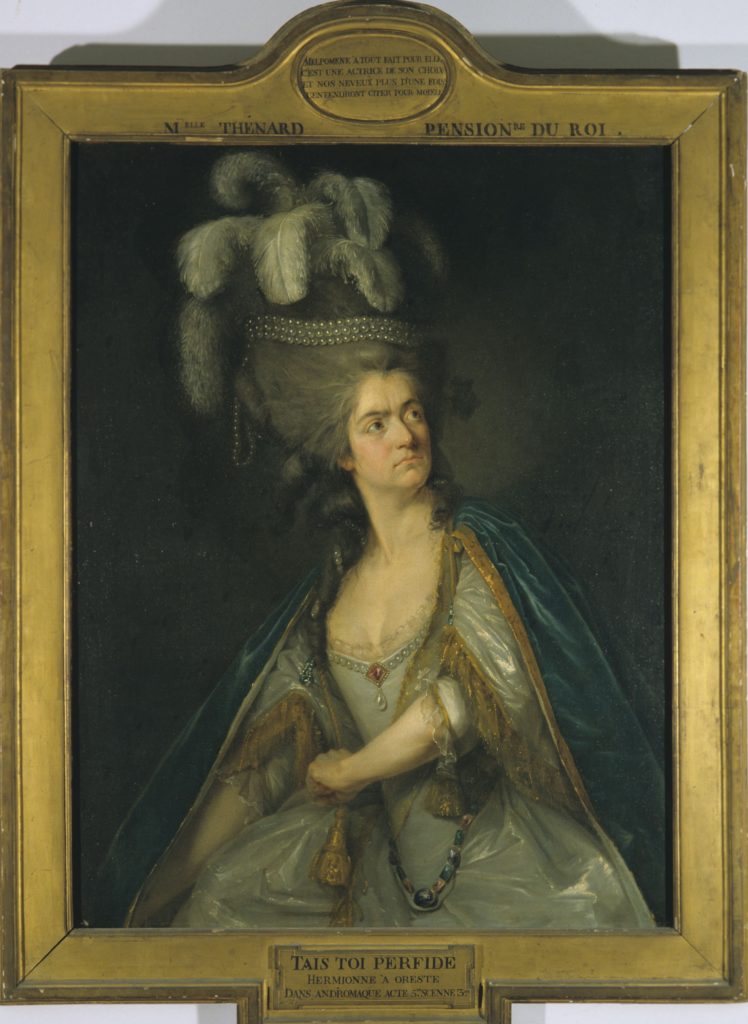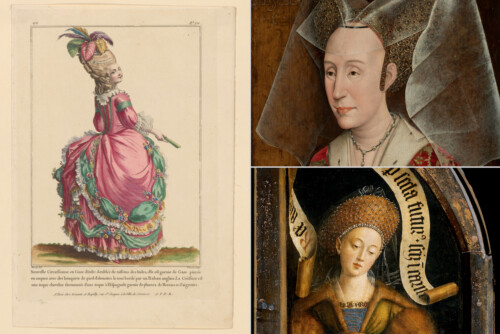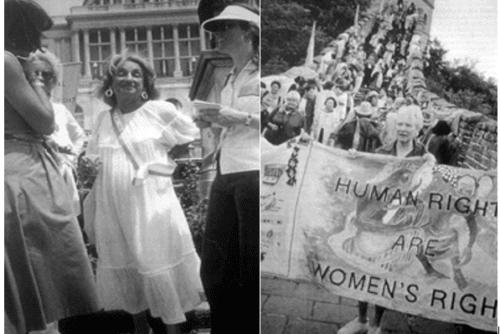How did women actors and visual artists perform the role of “woman” from the end of the ancien régime to the early aftermath of the French Revolution? 1 There is no doubt that “woman artist” was not a credible social status in eighteenth-century France. “Actress” was even less so. Between about 1780 and 1830, these two professional groups, one scarcely less scandalous than the other, worked together to radically alter their identities. To refer to women actors who were equally known as mistresses of influential men, on whose financial resources they often relied, Kathryn Norberg coins “courtesan/actress.” These women envisioned, in collaboration with architects, remarkable homes that, as Norberg argues, “stood as advertisements for the multi-faceted performances of their owners.” 2 Women writers and visual artists, too, devised ways to transcend professional limitations imposed upon them by multiple sociopolitical factors; recent studies, including Women Art Critics in Nineteenth-Century France: Vanishing Acts (2013) and Plumes et pinceaux: Discours des femmes sur l’art en Europe (1750–1850) (2012), have helped to revise cultural history by shedding light on the artistic achievements of women writers, critics, and visual artists. 3 Building on this scholarship, in this essay I will investigate an underexplored outlet for the self-fashioning of creative women: portraits, painted by other women, that depict actresses in performance. Like the actresses’ houses that were both homes and stages, the portraits of actresses in their signature roles fused their multiple identities into a construct that celebrated them as performers and as women. Furthermore, the collaborations that these portraits entailed helped to weave a close-knit social network of women artists across theater and the visual arts.

At the turn of the nineteenth century, the portrait of an actress known as Madame Thénard mère (1757–1849) in the role of Hermione, painted by Adèle Romany (1769–1846), exemplifies the material culture of a community of women artists (figure 1). Thénard and Romany cultivated friendships and collaborations, both with each other and with others, that helped them negotiate their double identities as women and as artists and also present themselves as professionals to peers and patrons.
This portrait can be understood as a material nexus of women actors’ and painters’ shared ambitions in constructing an artistic and sociopolitical identity. Intertwining friendship and business as well as theatrical performance and portraiture, women actors and painters established a sociocultural practice that contributed to their mutual professionalization. The larger implication of my argument is that women actors and artists played an instrumental role in the formation of a monde des arts in Paris at the end of the ancien régime and through the first decades of the nineteenth century.
Layers of Identity: Integrating Actress and Role
The woman in Romany’s portrait stands still, but her turned head, fierce expression, and tense arm suggest impending movement and speech. The flickering light on her elaborate costume contrasts with the dark background and seems to echo her psychological turmoil. Can we see Thénard beyond Hermione’s theatrical presence? The portraitist and the sitter crafted an image that depicts both the actor and the character she performs.
The comments inscribed on the portrait’s frame – contemporaneous with the portrait – emphasize the double identity of the figure as actor and as fictional character. The frame inscriptions that identify the woman as Hermione in Racine’s Andromaque also provide the first words of the line she is saying, much like a cue, and praise the actor who performs that role: “Melpomène a tout fait pour elle. C’est une actrice de son choix. Et nos neveux plus d’une fois. L’entendront citer pour modèle.” (Melpomène was generous with her. She chose to be an actress. Our heirs, more than once, heard how she was evoked as a model.) 4 The reference to Melpomène, the muse of tragedy, suggests that Thénard specialized in tragic roles. The comment also points to Thénard’s dedication to theater, as she was “an actress by choice.” Owing to her success, she became a model for others.
Magdeleine Perrin, known as Madame Thénard, had an accomplished career of more than thirty years. Discovered by the famous actor Préville when she was a singer for the Opéra Comique of Marseille, Thénard became affiliated with the Comédie Française as sociétaire in 1781 at the age of twenty-four. During the Terror, like so many of her colleagues, she was imprisoned. Pregnancy saved Thénard’s life; freed after Thermidor, she rejoined the theater and traveled to Germany as part of Napoleon’s Comédiens de l’Empereur. Her children and grandchildren became performing artists, earning her the appellation of “mère” (mother) in theater circles. 5
In the letter through which Thénard donated her portrait to the Comédie Française, she asked to be remembered as a pivotal member of that artistic community. Composed in 1837, when she was eighty years old and blind, and probably dictated to an assistant, the letter centers her identity as a woman actor. An excerpt reads: “Quand j’étais jeune hélas il y a longtemps on fit de moi dans Hermione un portrait qui fut trouvé très ressemblant.” (From when I was young – alas, a long time ago – dates a portrait of me in the role of Hermione that was thought to have captured a very good likeness.) 6 She signed the letter as “mère” – a reminder that her identities as an actor and as a mother were so interwoven as to be inseparable. Unlike the courtesans/actresses who emphasized their youth and beauty above all else, Thénard cultivated the image of a serious and respectable woman, equally dedicated to her profession as tragedienne and to her role as a parent.
Why did Romany and Thénard choose to depict Thénard in the role of Hermione? And why at this specific moment of act five, scene three of Racine’s Andromaque? Thénard as Hermione is about to utter “Tais-toi perfide / Et n’impute qu’à toi ton lâche parricide” (Be silent, treacherous monster / And find no one else to share the guilt of your cowardly murder). That phrase encapsulates Hermione’s reaction when she learns that Pyrrhus, the man she loves, is dead. In the previous act, Hermione had asked Orestes, who was in love with her, to kill Pyrrhus to avenge her humiliation after Pyrrhus rejects her. Orestes did not fulfill her request, but in act five informs her that the Greeks killed Pyrrhus and stresses his own role in Pyrrhus’s demise. Confronted with the shocking news and dismayed by Orestes’s enthusiasm, Hermione disavows her involvement and dismisses her previous order as the irrational whim of a hurt lover. It is in this context that she angrily bursts in, saying: “Tais-toi perfide / Et n’impute qu’à toi ton lâche parricide.” (Be silent, treacherous monster / And find no one else to share the guilt of your cowardly murder.) The moment Romany chose to depict is the peak of dramatic tension right before the tragic resolution of the fates of the two characters: Hermione will commit suicide over Pyrrhus’s body and Orestes, trapped in a vision of the Furies, will go mad.
The painting is therefore not only a portrait, but also the representation of a pivotal moment in the play. Racine was a fashionable source of subject matter in theater and the visual arts in the post-revolutionary period. According to James Henry Rubin, Racine’s texts, traditionally opposed to those of Corneille, were sought for their emphasis on emotion and tragic expression. 7 According to Garzya and Norwood, in Racine’s Andromaque, Hermione maintains the play’s dramatic tension. 8 Young, irresponsible, and tormented by shame, by rivalries with her mother and with Andromaque, and by the burning desire for revenge, she keeps the flame of disruption and adversity alight. In her early forties and a mother, Thénard was nothing like Hermione. The contrast between the actor’s social persona and her theatrical role increased the spectacular dimension of the transformation of identity on stage and in the portrait. Thénard’s rich life experience must also have contributed to her expressive rendition of Hermione. In the portrait, Thénard creates, in collaboration with the painter Romany, a more mature and more articulate Hermione. It was Romany’s task to capture this negotiation of identity.
How does the portrait attest to and fuse multiple layers of identity? According to Judith Butler, identity “is created by performances accumulated over time.” 9 The fictive woman in the portrait reflects, through Romany’s eyes, a moment of theatrical performance that merged the fictive Hermione with Thénard’s social persona. Butler’s observation calls attention to the rehearsed aspect of that moment and to the multiple layers of temporality in the portrait.
- Kathryn Norberg, “Actress/Courtesans and Their Homes,” in Architectural Space in 18th Century Europe, ed. Amy Baxter and Meredith Martin (London: Ashgate, 2010).[↑]
- Norberg, “Actress/Courtesans,” 106. [↑]
- Wendelin Guentner, ed., Women Art Critics in Nineteenth-Century France: Vanishing Acts (Newark: University of Delaware Press, 2013); Mechthild Fend, Melissa Hyde, and Anne Lafont, eds., Plumes et pinceaux: Discours des femmes sur l’art en Europe (1750–1850) (Dijon: Presses du réel, 2012).[↑]
- All translations are my own.[↑]
- Documentation file on Adèle Romany, S.C. 1962, Bibliothèque-Musée of the Comédie Française.[↑]
- Letter dated 3 August 1837 in the documentation file on Adèle Romany, S.C. 1962, Bibliothèque-Musée of the Comédie Française.[↑]
- James Henry Rubin, “Guérin’s Painting of Phèdre and the Post-Revolutionary Revival of Racine,” Art Bulletin 59, no. 4 (Dec. 1977): 610.[↑]
- Antonio Garzya, “Interpretazione dell’Andromaca di Euripide,” Dionisio 14 (1951): 109–38; Gilbert Norwood, Essays on Euripidean Drama (Berkeley, CA: University of California Press, 1954), 43; Isabelle Torrance, “Andromache ‘Aichmalōtos’: Concubine or Wife?,” Hermathena 179 (Winter 2005): 39. [↑]
- Judith Butler, Gender Trouble: Feminism and the Subversion of Identity (New York: Routledge, 1990), 140–1. [↑]



